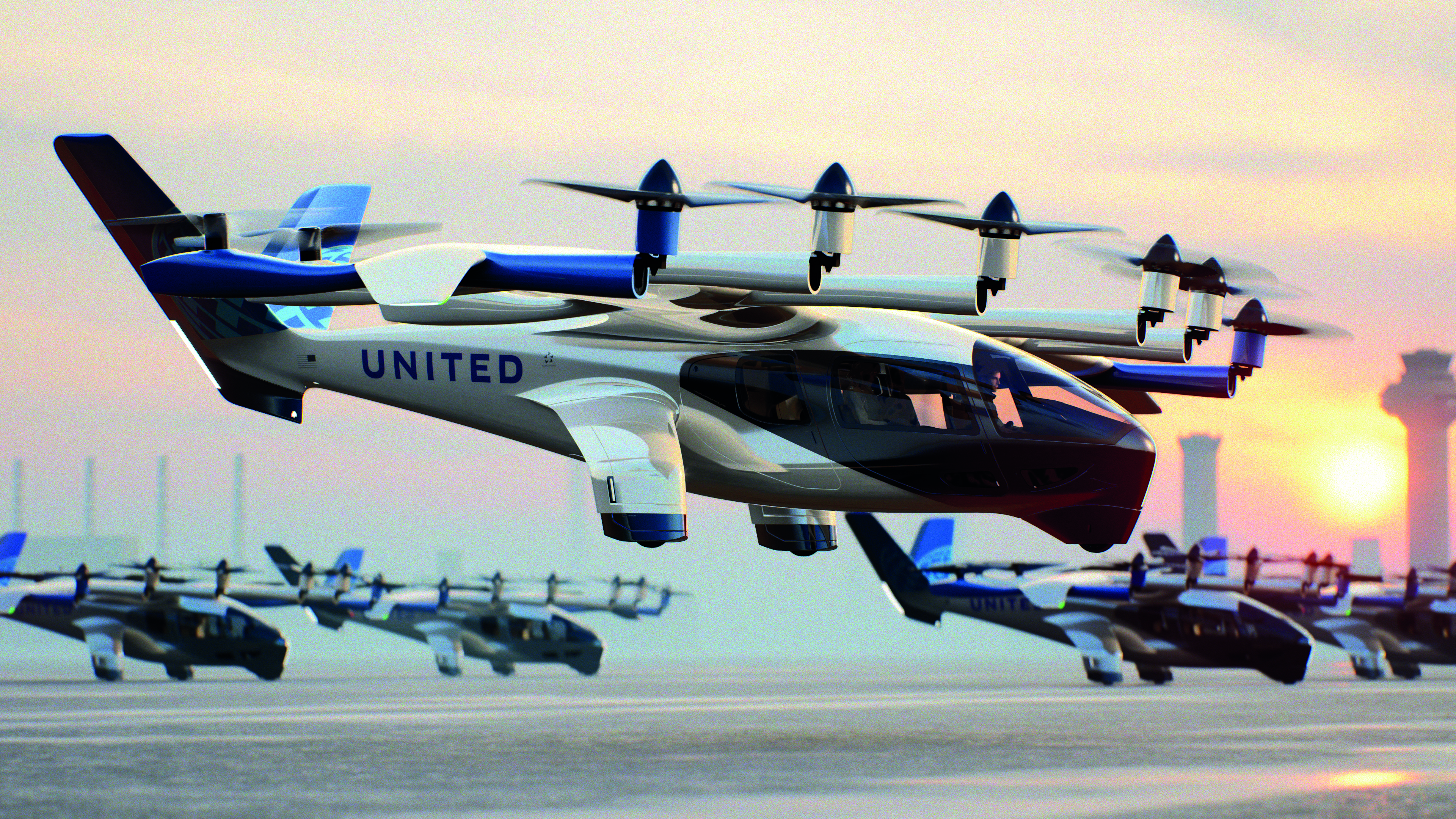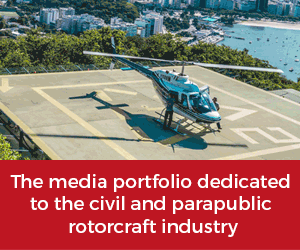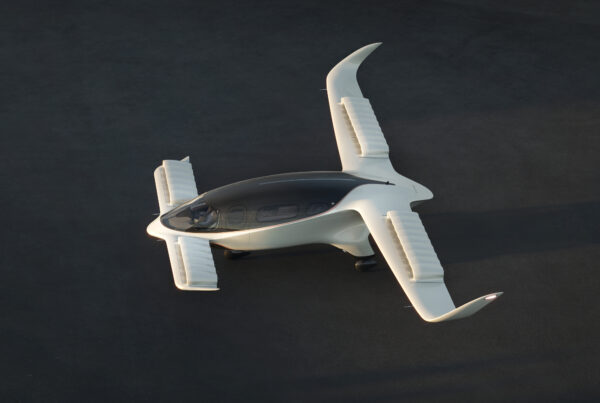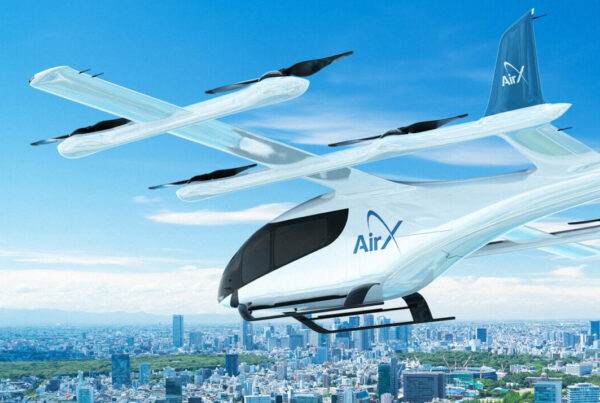As eVTOL programmes progress, there remains a herd of elephants in the room that have to be considered and overcome if the technology is to achieve the promise so frequently touted. Gideon Ewers investigates.
While I’m often accused by the younger members of the RotorHub International team of being a grumpy old bloke with Luddite tendencies, my defence is that my scepticism is borne of decades in the industry and associated disappointments. Although I remain at heart an aviation geek ready to be dazzled by the “cool new stuff”, checking in to Hotel Reality reveals that for the programmes to succeed, there remain many rivers to cross.
Money talks
The first question must always be, is there a market for the aircraft? For any aircraft to be a success, the prerequisites are that there must be people who wish to transport either themselves or cargo between two points and be willing to pay a price that will deliver a sustainable yield for the operator.
The aviation industry is littered with the carcasses of companies and operators that have failed to grasp that concept. Doubtless, developers will point to the swathes of orders they have announced as evidence that the demand is there. The trouble with these “orders” is that, in the main, they tend to be, on closer examination, in the form of memoranda of understanding (MoUs) or letters of intent (LoIs) or position reservations.
While it is true that some of these orders have been backed up with actual cash changing hands, the scale of that financial commitment is actually rather limited. Especially when compared with what are aviation industry deposit and payment norms.
Consider the size of the orders announced at the Paris and Dubai shows in 2022. Or, closer to the helicopter world, the Bundeswehr order for H145s was announced at the end of last year. By that measure, the sums changing hands thus far are, to use the vernacular, “chump change”. Thanks to this limited commitment or vested interest, the MoUs, LoIs and so forth are a bit like mist on a summer’s morning and apt to evaporate at the slightest of provocations.
Accordingly, the order announcements cannot in themselves be taken as evidence that a huge latent demand exists. How about a stress test of the claims made for the opening markets? The high-profile announcements speak of urban air mobility between city centres and other transport nodes like airports. More specifically, the talk is about connections between Manhattan and New York City area airports like JFK or Newark.
The claims made speak of transit times from the East River Heliport in lower Manhattan Island to the two airports as 10 minutes or less. But is that possible?
I put it to the test using one of Entrol’s FTDs based on a Bell 505 – with a routing direct from East River flying at the 505’s max cruise speed of 125 kts, and landing at the very nearest point at JFK, it could be done with around a minute to spare. Success!
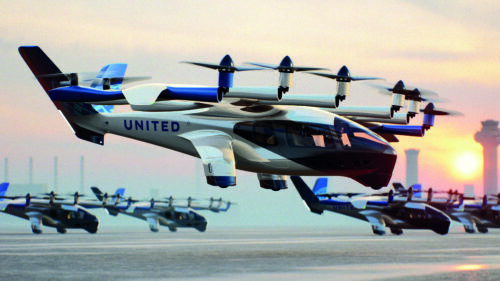
Archer’s Midnight eVTOL in the livery of United, its airline launch customer.
Image: Archer
Life is seldom as simple as that, though. The nearest point of JFK is the general aviation terminal near the departure end of runway 31L and, thus, not ideally placed for the airport terminals. Accessing them, especially Delta’s, will require not only more flight time than the headline values but also some nifty sequencing. In addition, I’m quite sure that had our “test” been real world it would have concluded with ATC saying: “Are you ready to copy, we have a number for you to call.”
So then, the service promise being made is achievable, kinda, if you close one eye. A more realistic transit will certainly take a few minutes more. Even so, it compares favourably with the Van Wyck or Beach expressways, so I think we can call this a tick in the win column.
Reality bites
The thing is that if one chose to and had the financial flexibility, one could do that today in a conventional helicopter. Yet, relatively speaking, very few do so. Is it a question of environmental responsibility? Or concern for noise footprint? Noble though these are, the suspicion is that comes down to the price of the ride.
We can expand the test by looking at a wider urban air mobility test case. Fortunately, there is an ideal model for examination.
Brazil’s Greater Sao Paulo boasts 210 public and private use heliports. To put that in perspective, New York, in the example above, has three, London has two, and Paris soon to be none. Even Los Angeles pales into insignificance with a tenth of Sao Paulo’s total. Furthermore, Sao Paulo already has in place an impressive low altitude airways system tailor-made for vertical lift traffic.
Surface travel in the city is always slow and sometimes dangerous, with carjackings and other vehicle-based robberies widespread.
So you may think that beyond the high-net-worth individual travelling from their estancia in the outskirts to their downtown heliport, there would be a ready market for charter or ride-share type operations. You would not be alone in thinking that. Many have tried, and no one has made a success out of it thus far. It seems that, as with the limited New York model, it comes down to price. Of course, it is argued that thanks to the use of electric power, eVTOLs will be significantly cheaper to operate compared with internal combustion engine-powered aircraft.
This may indeed be so, but even setting aside that the energy for charging the batteries will have to come from somewhere and must attract a cost, is fuel price going to be a make or break when it comes to the realities of the cost of operation – the vital seat/mile equation?
Indirect costs look awfully similar. The cost of ownership, the price of acquiring a five-seat eVTOL, is not set to be significantly lower than that of a similarly sized helicopter. The cost of finance will be the same.
The rental for office space, terminal space, handling, check-in and administration staff wages are all set to be the same. Will insurance be any cheaper? It seems unlikely. Turning to direct costs, pilot salaries will be the same; the cost of landing and ATC fees will be the same.
Discussing the introduction of eVTOLS, one city centre heliport operator told me that while they look forward to welcoming eVTOL operations, they will be charged exactly the same landing and handling charges as a similarly sized helicopter. Inevitably, eVTOLs will also require the same level of maintenance as conventional aircraft. So it is hard to see where the vital seat/mile costs critical in determining fares and yield will be low enough that fares or charter fees can be dropped enough to open a new market sector.
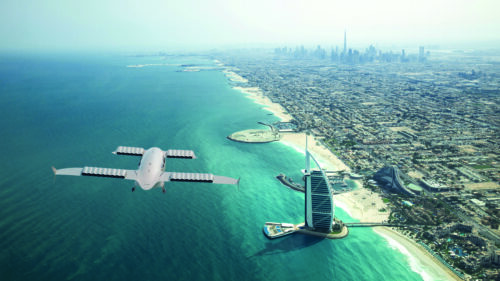
Sky’s the limit: with a top speed of 120 knots, the Lilium Jet soars above Dubai, well an artist’s impression does. Image: Lilium
Certainly, earlier service announcements appear to offer services as an add-on to premium passengers flying onward with partner airlines. So is there, then, in reality, a market for the aircraft beyond that which currently uses conventional aircraft for urban and ultra-short-haul mobility? It appears on the evidence thus far that there isn’t. Accordingly, will there be a market for swarms of aircraft as predicted by the more bullish of developers? It seems unlikely.
Getting physical
Often heard in the original TV and film series of Star Trek was an exasperated Chief Engineer Scott telling Captain Kirk that it was impossible to change the laws of physics. And so it is with eVTOLs.
First, there is the matter of the power-to-weight ratio of present battery technology, which delivers around 1 MJ per kilo. This compares with 40 MJ per kilo for Jet A.
Granted, even if you take into account the far greater mechanical efficiency of an electric engine, the overall power-to-weight efficiency of the turbine engine is around 15 times that of its electric counterpart. Technology is always evolving, but it will take a leap of an unprecedented magnitude for that advantage to be eroded. Equally, while an internal combustion propulsion system improves its efficiency as it operates, consuming fuel and, therefore, weight, this is not the case for battery technology.
Simply put, a fully charged battery weighs exactly the same as a discharged one, so fuel/range/payload flexibility is not available to the eVTOL operation. Unless, of course, a modular quick-change capability for batteries is developed. Another point to consider is that all that weight, aircraft fuel, passengers and their luggage or cargo must be lifted, and that creates downwash.
It is Newtonian in its simplicity. In order to take a given mass into the air, lift greater than that mass must be created. If you create that lift with a single larger diameter rotor disk, then the downwash will be less than creating the same amount of lift with multiple smaller diameter rotor disks. An R66, for example, will create a downwash of around 38 mph in the hover at gross weight. It’s a lot of breeze and will certainly throw loose material around.
Now compare a six-rotor eVTOL with a similar mass but much smaller diameter columns of air creating lift. The downwash of each will be more akin to 280-plus mph. Or, putting that another way, six little columns with the wind speed of an EF5 tornado. Some serious thought will have to be paid to ground handling and the construction of heli/vertiports so they can withstand that kind of pounding. Furthermore, there will be other considerations about the impact of downwash on structures and people in the immediate vicinity of such facilities.
Another element that must be addressed is the noise footprint. Engine-wise, eVTOLs will be significantly quieter than their conventional counterparts, but let’s not forget that the majority of aircraft noise in vertical lift aircraft is created by aerodynamic factors rather than their engines.
The ducted fans of Lilium may have something of a leg up here, but until there is comparative data, the question is moot.
Flight and validation
Another hallmark of the eVTOL developer publicity machine is how well they are progressing towards certification. This is an interesting claim since the meat and drink of certification is never the paperwork phase but rather the flight and validation phase. Just ask Leonardo about the AW609 – 30 years and counting – or Bell about the 525, closing in on nine years since its first flight.
Naturally, the regulators are cautious – and rightly so. Their job is to ensure that aircraft and flight operations are as safe as possible. Historically, new aircraft certification is a process that takes about five years – unless, of course, there is something novel about the aircraft’s design or control system. Given that these aircraft are of both a novel design and power system, the process is likely to be a long one.
Waiting game
EASA, which of the western regulators is the most advanced, estimates that it will only be ready to start certification at the end of this year – meaning that service entry still remains some way into the future. The FAA, on the other hand, is yet to finalise its proposal for the Special Federal Aviation Regulation (SFAR) that will allow certification of eVTOLs.
Worryingly for the eVTOL community, if a number of items in the draft SFAR remain in the final regulation, such as the requirements for pilot training and fuel endurance, then there is little hope for the concept as a commercial vehicle. I’ll be very interested to see how the various contenders fare in blade off failure propagation testing.
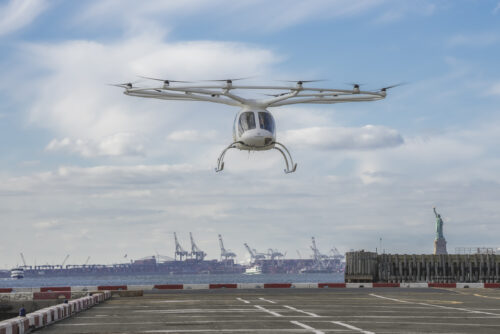
Source: Volocopter
The other point about certification to bear in mind is that all the programmes are presently pursuing VFR certification. That and the lack of known icing capability could make continuity of service challenging, to say the least. Beyond the regulatory minefield, there remains the challenge of public acceptance. The noise impact of vertical lift aircraft has become something of a political football in some cities, notably New York and Paris. In the latter case, the city government has effectively said “Non” to eVTOL operations in the city, much to the chagrin of Volocopter with its Olympic aspirations this summer.
As in New York, the discussion has become an emotive one rooted in the politics of envy and touted as a haves versus have-nots debate. This saw Paris’s Deputy Mayor denouncing the plans as “a totally useless and hyper-polluting gadget for a few ultra-privileged people in a hurry”. The elected officials called into question noise and visual pollution, as well as the risk to the safety of passengers and Parisians alike.
Philippe Goujon, the Mayor of the 15th arrondissement, home to the Issy-les-Moulineaux Heliport, has reiterated his ambitions to close the facility. Developing an aircraft is an expensive business. One industry commentator observed, “If you don’t have a billion dollars on hand, you might as well fold your tent and go home.”
An examination of the publicly available financial results of developers indicates that you might need rather more than that, especially against a background where your only revenue is from repeated calls on investors. Simply put, if you are spending US$150 million a quarter, it won’t take you very long to burn your way through a billion.
Some developers have been canny enough to secure military testing contracts that will provide at least some form of income while they await certification, but it might be a case of bailing with a leaky bucket. The markets, once starry-eyed about the prospects, seem to be hardening their position in response to the increasing cost of money combined with what one broker called “promises of jam tomorrow”.
That has been reflected in market performance, with more than one developer facing the threat of de-listing in recent months. When it comes down to it, we can discuss power-to-weight and lift-over-drag ratios, but what really makes aircraft fly is money and lots of it. As the markets harden their position, that may be a commodity in short supply.
Showing their hands
While I am sure that some of the present programmes will reach fruition, I’m equally sure that those that do so are unlikely to be in their present form. The position that developers have adopted so far, what might be called the “Field of Dreams” approach – you may recall the Kevin Costner film with the tagline “If you build it, they will come” – is no longer sustainable, and I anticipate that this year will be the great reckoning for many in the market. Those programmes that exit the stage may, of course, re-emerge in another guise.
I cannot help reflecting that of the big three helicopter OEMs, two are keeping their eVTOL cards closely guarded, and the other, while active, remains cautious in its advances.
If you enjoyed reading this article, which is published in the February/March 2024 edition of RotorHub International, apply for your complimentary subscription HERE to read the whole magazine.


